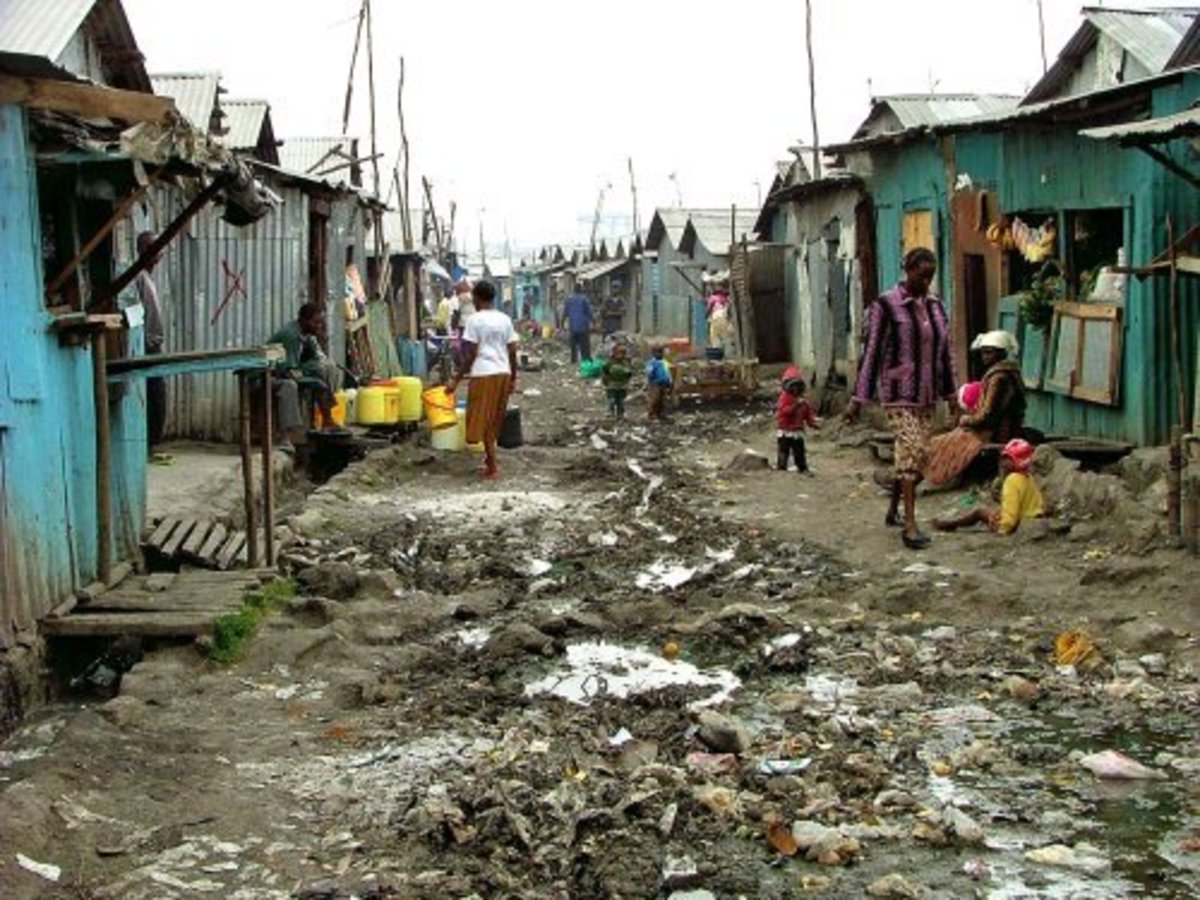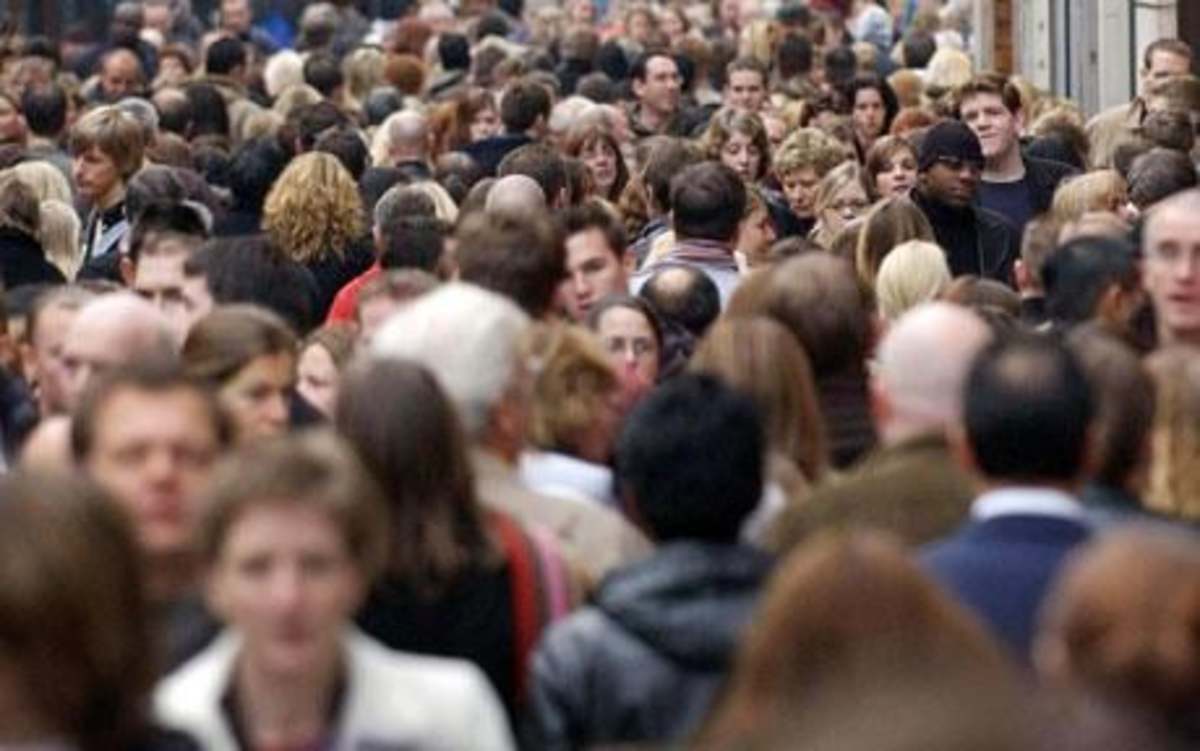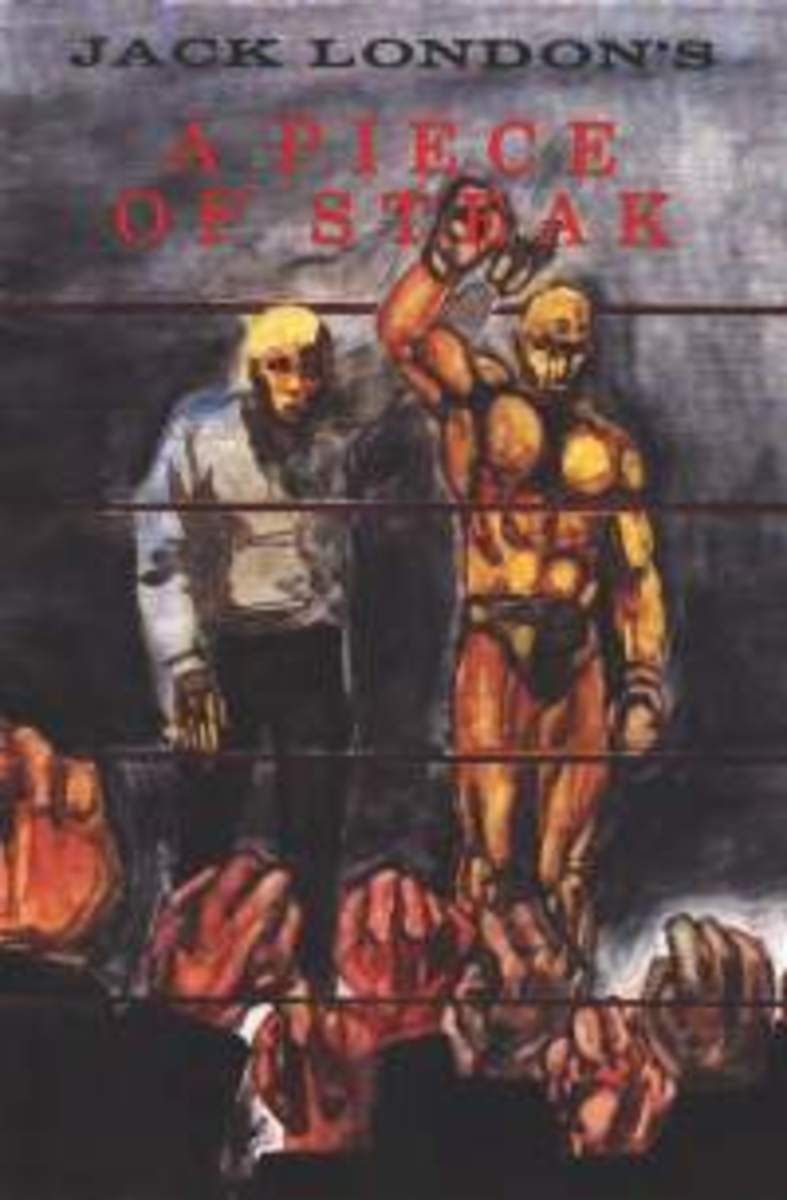GREAT FAMINES
Famine has been a calamity, which has afflicted all the five continents in history. It is a serious and widespread shortage of food supply resulting in malnutrition, starvation and epidemics with a rapid rise in mortality.
FAMINES DOWN THE AGES
IN ANTIQUITY
The first known outbreak of famine was in the Old Kingdom in Egypt. It is believed that for nearly three decades the usual flooding of the river Nile did not take place. Many attribute this to the reduced rainfall on account of global climatic changes. The result was there was a great famine in Egypt, Ethiopia and East Africa.. This ultimately led to the downfall of the Old Kingdom (22 centuryBCE). The next major famine in history took place in 440 BCE in ancient Rome. The famine was so severe that it is belieived many threw themselves into the river Tiber to escape hunger pangs.
IN EUROPE
The seige of Rome by Alaric I and its subsequent downfall in 408-10 CE created a great shortage of food in Rome Between 400 and 800 CE the imperial city’s population dwindled by over 90%.mostly on account of famine and plague. But some of the great famines in European history were all after the 15th century. Russia under Tsar Godunov in 1601 -1603 experienced one of the worst famines in its hstory. Nearly 100,000 people in Moscow alone died. It had its ripple effect in Estonia too, were nearly half the population perished due to famine. In 1708-1711 nearly 41% of East Prussia’s populations became victims of hunger. The death toll was 250,000 people. But it was Russia which was constantly haunted by the spectre of famine. In 1891-92 at least 375,000 died due to starvation. Some historians feel that it may have been as high as 500,000, but this was eclipsed by the famine of 1921 when nearly 5 million people died, in the newly established communist state of Soviet Union.
CENTRAL AND SOUTH AMERICA
The collapse of the Mayan civilization is a mystery, and there are experts who believe that it was the outcome of the mismanagement of ecosystems and global climatic shifts. Whatever may have been the reason, during 800 to 1000 CE millions of Mayan people had died due to severe drought. Around 1051 CE famines forced the Toltecs to migrate to present day central Mexico. Famine was also the cause for the collapse of the Anasazi civilization in 1275 to 1299 CE and later the Aztecs in 1450-55 CE
ASIA
China and India are two countries, which had witnessed famines of mammoth proportions. Being the most populous countries of the world, this was but natural. The 1702-04 famine in the Deccan resulted in the death of nearly 2 million people. Asiatic countries like, Turkestan, North Korea was victims of famines too, but there were famines of far greater magnitude and misery which continue to haunt our memories.
SOME GREAT FAMINES
THE IRISH FAMINE
One of the greatest famines of Europe and the British isles was the Irish famine of 1845.Owing to potato blight, which is a disease caused by fungus; two million acres of potato crop began to rot. The then British Prime Minister Sir Robert Peel appointed a commission to find a solution. Unfortunately the scientists could neither explain it nor find a cure. For the next three years in row the potato crops total failed. Peel took various emergency measures. He repealed the protectionists’ Corn Laws in order to facilitate cheap imports and set up soup kitchens operated by Society of Friends in order to alleviate the people’s misery. But the famine took its toll. During the famine years about 700,000 to 1000,000 people died of starvation. Many fled to the new world in over-crowded ‘coffin ships’ only to drown in the sea. Nearly 2000,000 people migrated to America reaching the new world totally emaciated and drained of strength. The misery was compounded by typhus, scurvy, dysentery and ‘famine fever’. The result was that between 1845 and 1851 Ireland’s population fell from 8 million to 5 million. This was a famine with deep socio-economic impact.
CHINA
One of China’s great famine was during the mid 1870’s when nearly five provinces of China were in the grips of a famine. This was the result of shortfall in rains for three consecutive rain followed by dry and dusty winds. As in the case of all famines winter aggravated matters and this great calamity was followed by typhus, dysentery and typhus. The human misery was heart rending. Children and women were sold into slavery and prostitution. Pillage and banditry became common, and millions tried to migrate to neighboring provinces. Shantung, Shansi, Shensi, Honan, and Chihli were in the midst of famine of epic proportions. Whatever relief works the Ch’ing imperial government could muster was impeded by the Taiping Rebellion (1850-64) which destroyed the richest agricultural lands. This was compounded by other woes too. Flood in six major provinces brought total economic dislocation and demographically the population had more than doubled. . Naturally relief measures were inadequate. The scale of human misery was graphically described by the English missionary Timothy Richard in his book The Great Famine wherein he describes how desperate people resorted to cannibalism. ‘ The eating of human flesh is a regular thing, and if the people were really dead before, there is little said about it, but if killed then litigations arise . . . About one fifth only of the children in some places are said to be left, the rest have perished by hunger, disease or— what shall I call it? The butcher’s hand! Whole villages are said to have disappeared’
The result was that 13 million people died. Though another famine in 1907 wiped out nearly 24 million people in terms of scale and callousness it is the Great Chinese famine of 1958-61 which eclipses all other famines. During this period though a conservative estimate of death toll is fixed at 15 million, many feel that nearly 43 million people perished. The famine was the result of economic plans going awry. China during this period had launched an ambitious economic plan called the Great Leap Forward. The planners aim was to bring their agricultural production on par with industrial growth. But their major error was the shortage of farm labor owing to its diversion to small scale industry. These communes were therefore ineffective resulting in starvation and misery. Welfare Economist Amartya Sen feels that "what was lacking when the famine threatened China was a political system of adversarial journalism and opposition.[...] Not only was the world ignorant of the terrible state of affairs in China, even the population itself did not know about the extent of the national calamity....''.
INDIA
Bengal had the misfortune of having famines many times during its history. The first indication of an impending famine was in November 1769 which was later confirmed by the onset of drought, crop failure and the resulting outbreak of disease. The summer of 1770 brought famine not just to Bengal but also to Bihar and Orrisa. The death toll was ten million and a revenue loss of two million rupees.
But what makes the Bengal famine of 1943 poignant is that it is a man made tragedy which has been confirmed by the studies of economists, sociologists and historians. The causes that led to this great Indian famine as follows.
- British India and Ceylon had depended on Burma for the supply of rice. But during the Second World War, the advancing Japanese troops posed a threat to British India. Fearing incursions to the province of Bengal, the British blockaded all supply routes and sources. The scorched policy implied, destroying all dwellings, communication systems and crop, particularly Chittagong area which is in the vicinity of Burma.
- To ensure sufficient food reserves for British troops in the Middle East rice was diverted from Bengal to meet this end.
- What aggravated the problem was the cyclone of 16th October 1942 in coastal Bengal which totally damaged the autumn harvest. With the granaries being empty by 1943 and confiscation of fertile lands by the government, demand far exceeded the supply. This led to hoarding, speculation, profiteering and corruption.
The result was a full blown famine which wiped out three million people. Though the colonial government of British India, imported 1000,000 tons of grain to Bengal from Britain, it was a little late and this was what prompted Amartya Sen to describe it as man-made catastrophe.
UKRANIAN FAMINE OF 1932
If the great Indian famine of 1943 was the result of insensitivity and myopic policies, The Ukrainian famine was one of design and oppression. Prior to the Bolshevik revolution, Ukraine and declared its independence from Russia. However a couple of years later it joined the Soviet Union. The embers of nationalism still persisted, which Stalin was hell bent on suppressing. His policies were framed to wipe out the last vestiges of it. Amongst all Soviet states of USSR, Ukraine’s agricultural sector was the most productive. With the introduction of collective farming, the state was the sole buyer of all agricultural produce. Every collective farm had to pay a levy to state. There was also law which explicitly forbade farmers from consuming the grains they produced, without first paying the levy to the state. Any person found violating it, whether it was a man, woman or child, were either summarily deported or executed. Stalin in a bid to crush the Ukrainian spirit arbitrarily raised the procurement quota to a staggering forty four percent. The policy had its intended effect, famine broke out and nearly six million people became its victims. In no time twenty percent of the population perished. In a 1988 report it was stated:
"That spring, there was not a household where someone had not died from famine. Whole families died out; there was no one to dig communal graves. Peasants mobilized by the village Soviet dug the earth with difficulty and many died there themselves. Decomposing corpses lay in houses for weeks. The stench spread far beyond the villages. By the beginning of June, not more than one quarter of the population remained in the villages, but they were incapable of any work." (Argumenty I Fatky, (Moscow) 1988, No.32)
WILL FAMINES REPEAT IN THE FUTURE?
Unlike in the past, the frequency and scale of famines have substantially reduced. UN organizations are in the forefront of averting such great calamities which is explicitly stated in its mandate “FAO provides the kind of behind-the-scenes assistance that helps people and nations help themselves. If a community wants to increase crop yields but lacks the technical skills, we introduce simple, sustainable tools and techniques. When a country shifts from state to private land ownership, we provide the legal advice to smooth the way. When a drought pushes already vulnerable groups to the point of famine, we mobilize action’ . Though great famines of the past may seem to be part of history and not bound to repeat, the figures churned out by FAO leaves no room for complacency. Just a casual perusal of the following data would make us realize this.
- Latest hunger figures to show that 925 million people live in chronic hunger and malnutrition.
- 100 countries require emergency assistance to rebuild their agricultural productive capacity and there are 30 in a situation of food crisis.
The causes:
- The world neglected agriculture in development policies, resulting in an under-investment in the sector in particular in the developing countries.
- To ensuring food security for the hungry today, food production will need to increase by 70 percent in the word and double in the developing countries in order to adequately feed a global population expected to reach 9.1 billion in 2050.
- Urban areas will swell by 82 percent, or around 3 billion people, while rural population will shrink by 20 percent.
- There is also the impact of climate change on production, with more frequent and severe weather events. Presently the global water cycle is changing. Climate change is affecting the amount of rainfalls’ and according to The Intergovernmental Panel on Climate Change, droughts and downpours leading to floods will increase in frequency and become more common in future. This will adversely affect crops around the world.
- Increasing instability of food markets. Increased price volatility impacts directly on investment decisions and flows and falls heavily on poor consumers who spend 50 to 60 percent of their income on food.
Present day famines are more the outcomes of wars, which Food and Agricultural Organization has found on the basis of a study. It was found that of the 18 countries subject to food emergencies, 14 were on account of current or past conflicts, and according to Cormac Ó Gráda ‘making famine history must be qualified by the realization that the threat of wars between and within nations is never far away. The hope for a famine-free world depends on improved governance and on peace’
‘The Green Revolution’ and GM Foods
One of the pioneers who did yeoman service to mankind in battling hunger was Norman Borlaugh. While working on a solution of improving crop yields in Mexico, he was successful in introducing an new strain of wheat which was many times more productive than conventional ones. Mexico which was importing half its wheat requirements till early 40’s became self-sufficient. Encouraged by this success, the experiment was replicated in Pakistan (1959) and India (1962). This ushered in the green revolution. However during the 70’s the environmental movement gained momentum and Borlaugh’s reliance on chemical fertilizers, pesticides and herbicides drew a lot of criticism from many environment activists.
Another innovation in battling hunger is by improving food production was the introduction of genetically modified crop. According to Paul Collier of Oxford University “Genetic modification is analogous to nuclear power: nobody loves it, but climate change has made its adoption imperative…….. Declining genetic modification makes a complicated issue more complex. Genetic modification offers both faster crop adaptation and a biological, rather than chemical, approach to yield increases”. There are people however who hold a different view. Doug Gurian-Sherman, a member of a nonprofit science advocacy group, in a report entitled “Failure to Yield” states that in a nearly 20 year record, genetically engineered crops have not increased yields substantially of food and livestock feed crops in the United States. The result is that countries like France and other European countries have banned Monsanto’s genetically modified crops. The debate continues and so is man’s fight to combat hunger and famine.
`







